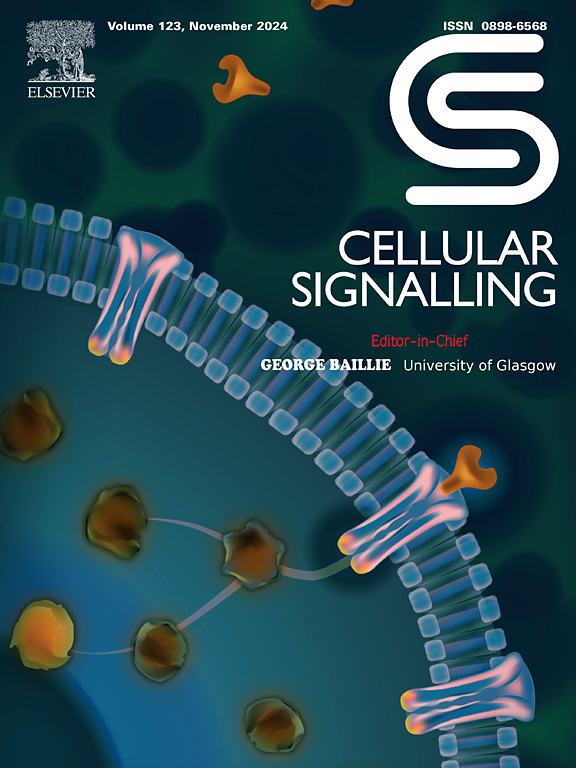GALNT14-mediated O-glycosylation drives lung adenocarcinoma progression by reducing endogenous reactive oxygen species generation
IF 4.4
2区 生物学
Q2 CELL BIOLOGY
引用次数: 0
Abstract
Aberrant glycosylation, resulting from dysregulated expression of glycosyltransferases, is a prevalent feature of cancer cells. N-acetylgalactosaminyltransferase-14 (GALNT14) serves as a pivotal enzyme responsible for initiating O-GalNAcylation. It remains unclear whether and how GALNT14 affects lung adenocarcinoma (LUAD). Here, GALNT14 expression in LUAD was analyzed by searching public databases and verified by examining clinical samples. Bioinformatics, LC-MS/MS, RNA-seq, and RIP-seq analyses were used to uncover the mechanism underlying GALNT14. We observed that GALNT14 was frequently overexpressed in LUAD tissues. High GALNT14 expression was positively associated with advanced TNM stage, larger tumor size, and unfavorable prognosis. Functionally, GALNT14 facilitated LUAD cell proliferation, migration, and invasion in vitro and accelerated tumor growth in vivo. Mechanistically, GALNT14 reduced the accumulation of endogenous reactive oxygen species (ROS) to exert its oncogenic function via O-glycosylating hnRNPUL1 to upregulate AKR1C2 expression. Meanwhile, GALNT14 expression was directly modulated by miR-125a.These findings indicated that GALNT14-mediated O-GalNAcylation could drive LUAD progression via eliminating ROS and might be a valuable therapeutic target.
GALNT14 介导的 O 型糖基化通过减少内源性活性氧的生成来推动肺腺癌的发展。
由于糖基转移酶表达失调而导致的异常糖基化是癌细胞的一个普遍特征。N-乙酰半乳糖氨基转移酶-14(GALNT14)是启动O-GalNA酰化的关键酶。目前仍不清楚 GALNT14 是否以及如何影响肺腺癌(LUAD)。在此,我们通过检索公共数据库分析了 GALNT14 在 LUAD 中的表达情况,并通过检查临床样本进行了验证。生物信息学、LC-MS/MS、RNA-seq和RIP-seq分析被用来揭示GALNT14的作用机制。我们观察到,GALNT14在LUAD组织中经常过表达。GALNT14的高表达与TNM分期晚期、肿瘤体积增大和预后不良呈正相关。在功能上,GALNT14 在体外促进 LUAD 细胞增殖、迁移和侵袭,在体内加速肿瘤生长。从机理上讲,GALNT14通过O-糖基化hnRNPUL1上调AKR1C2的表达,减少内源性活性氧(ROS)的积累,从而发挥其致癌功能。这些研究结果表明,GALNT14介导的O-GalNAcylation可通过消除ROS驱动LUAD进展,可能是一个有价值的治疗靶点。
本文章由计算机程序翻译,如有差异,请以英文原文为准。
求助全文
约1分钟内获得全文
求助全文
来源期刊

Cellular signalling
生物-细胞生物学
CiteScore
8.40
自引率
0.00%
发文量
250
审稿时长
27 days
期刊介绍:
Cellular Signalling publishes original research describing fundamental and clinical findings on the mechanisms, actions and structural components of cellular signalling systems in vitro and in vivo.
Cellular Signalling aims at full length research papers defining signalling systems ranging from microorganisms to cells, tissues and higher organisms.
 求助内容:
求助内容: 应助结果提醒方式:
应助结果提醒方式:


